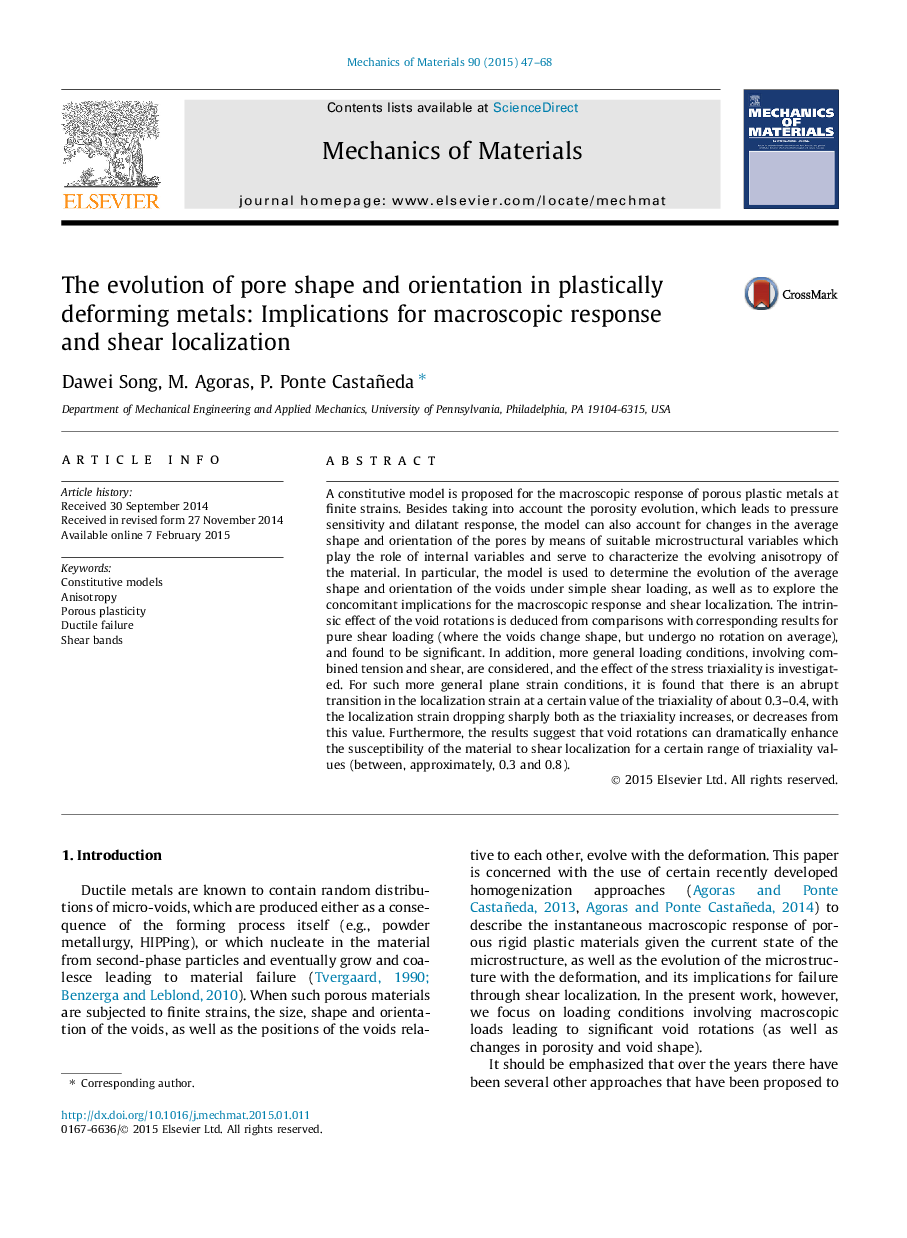| Article ID | Journal | Published Year | Pages | File Type |
|---|---|---|---|---|
| 797514 | Mechanics of Materials | 2015 | 22 Pages |
•We develop a homogenization model for porous metals applicable for general 3D loadings.•We account for the evolution of the porosity and average pore shape and orientation.•We investigate ductile failure by shear localization under plane strain conditions.•At large/low triaxialities, failure is controlled by void growth/collapse.•At moderate triaxialities (e.g., simple shear), void rotations have destabilizing effect.
A constitutive model is proposed for the macroscopic response of porous plastic metals at finite strains. Besides taking into account the porosity evolution, which leads to pressure sensitivity and dilatant response, the model can also account for changes in the average shape and orientation of the pores by means of suitable microstructural variables which play the role of internal variables and serve to characterize the evolving anisotropy of the material. In particular, the model is used to determine the evolution of the average shape and orientation of the voids under simple shear loading, as well as to explore the concomitant implications for the macroscopic response and shear localization. The intrinsic effect of the void rotations is deduced from comparisons with corresponding results for pure shear loading (where the voids change shape, but undergo no rotation on average), and found to be significant. In addition, more general loading conditions, involving combined tension and shear, are considered, and the effect of the stress triaxiality is investigated. For such more general plane strain conditions, it is found that there is an abrupt transition in the localization strain at a certain value of the triaxiality of about 0.3–0.4, with the localization strain dropping sharply both as the triaxiality increases, or decreases from this value. Furthermore, the results suggest that void rotations can dramatically enhance the susceptibility of the material to shear localization for a certain range of triaxiality values (between, approximately, 0.3 and 0.8).
